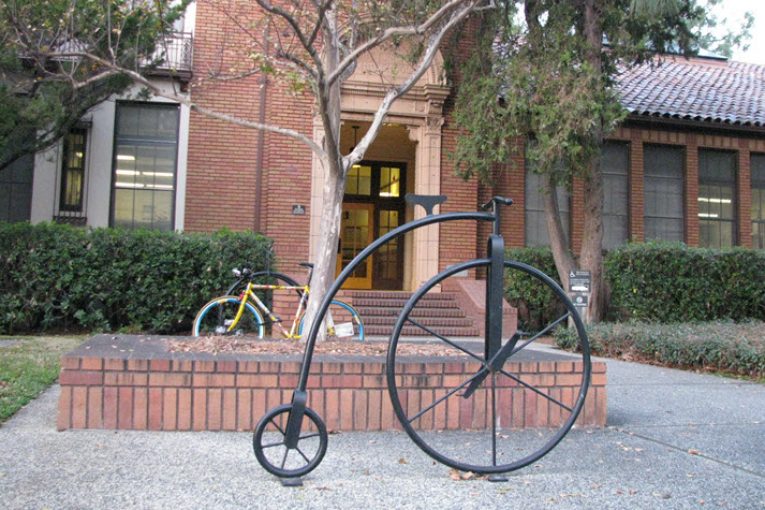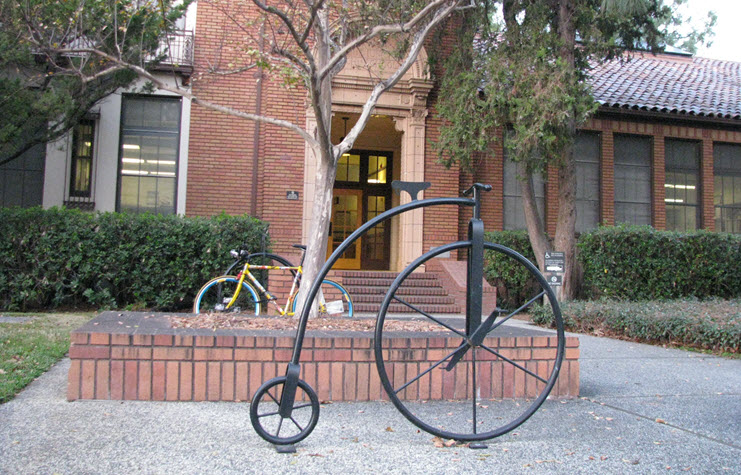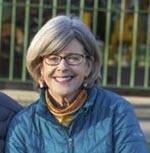

In May, there will be a special election to fill the vacancy in the 3rd District left by the departure of Lucas Frerichs to the County Board of Supervisors.
Filing to compete for that seat are two candidates: Donna Neville and Francesca Wright. Each week between now and the election, the Vanguard will pose the candidates weekly questions in which they have between 250 and 350 to respond.
Question 2: How can the city better address the needs of unsheltered unhoused populations?
 Donna Neville
Donna Neville
Addressing homelessness is a key issue at the heart of my campaign. The city does not currently have sustainable funding to support the Department of Social Services and Housing, which is specifically tasked with addressing homelessness. If elected, I will work to secure stable funding. It’s also important to recognize there is no single solution to homelessness. Temporary homelessness and chronic homelessness require  different solutions.
different solutions.
Temporary homelessness is often caused by a financial, medical, employment or other crisis. To address temporary homelessness, the city should promote a variety of flexible and affordable housing options: a streamlined process for citing ADU’s; a one-stop shop for applying for affordable rental units; a streamlined Housing Choice Voucher acceptance process; and reducing barriers to getting accepted into affordable housing. Some California universities and colleges are already helping by providing rental assistance to students. Some of these options are already underway; others require collaboration with partners, including UCD and rental property owners, but the city can do a tremendous amount to prevent and address temporary homelessness.
Addressing chronic homelessness is challenging and requires more than providing housing. It requires wraparound services, including mental health, substance abuse treatment, and job and life skills training, coupled with supportive housing. I am heartened by the collaboration that went into building Paul’s Place, which uses this model of combining wraparound services with housing, but now it needs additional funding to operate. The city can be a partner by applying for Mental Health Services Act funding to provide onsite mental health services at Paul’s Place.
I’m also fully supportive of our new Downtown Streets Program, starting next month, which pays a stipend to unhoused individuals who work to clean up downtown and connects them with support and services. This program has been very successful in other communities at empowering those who are unhoused by giving them the tools to lift themselves out of homelessness.
This work is going to require strong leadership, vision, and persistence. My many years of working to improve government services make me uniquely qualified to implement innovative solutions.
 Francesca Wright
Francesca Wright
The high cost of housing has exacerbated the homeless situation throughout California. Solutions must address housing affordability, supportive transitional housing, and temporary needs for safe shelter.
We are on the right track. The City of Davis, in partnership with Yolo County, health providers, nonprofits, faith communities, student and community volunteers has done an extraordinary job. Davis Community Meals and Housing provides permanent housing at Cesar Chavez Plaza, Creekside Apartments and soon at Paul’s Place. St. Martins grows food and provides meals three times per week. Once beyond the metal gate, the L Street respite center welcomes unhoused persons six days per week where they can do laundry, shower, charge phones, store items, rest, access regular and electronic mail, and access an array of health and social services. COVID disrupted our long-standing winter shelter program but did bring one-time state and federal dollars which were used for various short-term housing solutions. The Yolo County’s Crisis Now program is ramping up so that those with mental and behavioral health challenges have appropriate care.
Despite all these efforts, we do not have designated options for all our unhoused. Governor Newsom has been asking cities and counties for more aggressive plans to reduce street homelessness. From our attempt to use the migrant center south of town, we have learned that on-site supervision is necessary and comes with a price tag. Prior council discussions of a designated campground or tiny house community north of town on Pole Line never got traction. The Heart of Davis is currently proposing that the city plan for permanent year-round shelter at two locations, 512 Fifth Street and 1101 H Street. A council subcommittee is evaluating all publicly held properties, including the two mentioned, for their potential to address our housing crisis. I support this comprehensive assessment of best use and enduring benefits of public properties at appropriate heights to accommodate a mix of critical uses. I will direct our new Department of Social Services and Housing to collaborate with our local partners to develop a specific plan for both short-term and permanent solutions and to vigorously pursue the state and federal grants for which we qualify.






I suggest that the candidates for district 3 speak privately with the residents and businesses near the L St. respite center about the impacts it has had on the neighborhood. IMO any site that provides services needs to be staffed 24/7 or it leads to adverse consequences in its vicinity.
My suggestion is that the site on L St. be closed and the services be folded into Paul’s Place, which will have that staffing. But more important is that we need to look at the results: clients being referred, those refusing services, impacts on neighborhoods, safety protocols. And not be guided by ideology but by practical evaluation of outcomes. The needs of the whole community need to be addressed as we deal with the homeless population.
.
We are more than likely going to see the above phrase from both Donna and Francesca every Monday when answering every weekly Vanguard question. The name of the specific program or Department will change each week. This week it is the Department of Social Services and Housing. It just as easily could be “street repairs and maintenance” or “bike paths repair and maintenance” or “storm sewer maintenance” or “summer youth programs operations” or “street and sidewalk cleaning” or any number of the normal functions of a municipality. Bottom-line, we have promised ourselves a rich menu of services, but when the bill has come due for paying for those services we have hidden our wallets.
The one correction to the statement is in the word “city.” That word should be capitalized to read “City.” By capitalizing the letter “c” you are referring to our municipal governmental agency … the City of Davis. With the “c” uncapitalized you are referring to the community … which is much broader than our City government. History shows that our community … the City of Davis … actually does have the sustainable funding to support the Department of Social Services and Housing. Further, when we, as a community, have had honest discussions about the value and cost of City services, we have stepped up and taken our wallets out of hiding and provided the additional sustainable funding for those services. What we pay for water is a perfect example. The current City Budget shows we paid just over $25 million in actual water service fees in 2020. In 2012 we paid just over $10 million. The residents and taxpayers authorized that annual $15 million per year of additional sustainable funding.
The whole community, not just City Council, not just Francesca and Donna, needs to have a candid honest discussion about what we want our community to be and then make sure our City has the wherewithal and leadership to make sure we actually are that city /community that we want to be.
mentioned directly only by Neville. Still, curiously called
About Matt’s comment: Tens of thousands of (often) ten times weekly guests who drive their vehicles through our City (and city) without a care about how it’s affecting thousands whom they don’t know. Can we get them to pay up? Super rough at $1 per vehicle per drive-by it’s about $1.2 million per month*. And that’s a fraction of the typical toll. No risks of regression taxation here when that’s the price of about 1/5 of a gallon of gas, yes?
*Roughly 150,000 vehicle drive-bys every week in a single direction x 8.
The majority of those use Interstate 80 and/or Highway 113, both properties owned and maintained by the State of California.
I expect that the State would take a dim view of that, as it would lend a new meaning to the term “highway robbery.” Even if both were made toll roads, the tolls would accrue to the State, not to the City.
“…State of California…”
Multiple bridges and other egresses – e.g. transitions from one part of the “-80” system in the Northern California Megaregion (80, 280, 580, 680, 880 etc.) to another, the Oakland Bay Bridge and the Golden Gate Bridge have tolls which produce income that’s used to subsidize public transportation ONLY in the Metropolitan Transportation Commission (MTC) sub-region, all the way east to our border with Solano County, some specific to parts of it (Golden Gate…). The funds are transferred, co-administrated etc by the MTC, Golden Gate Bridge District etc.
Thus… people who live in and drive from San Francisco to Sacramento through the lower middle of Davis – oh I can hear it now, how pleasant! – and back pay one toll west (Carquinez), one east (Bay Bridge)…. and SACOG sees none of this. Davis doesn’t, but Dixon does.
Multiple bridges and other egresses – e.g. transitions State of California e who live in Sacramento and drive to Oakland or SF and back pay one or two tolls, and their money goes to transit in MTC, similar for 680 if people drive to San Jose or the eastern East Bay etc.
Add to this issues such as the Yolo Solano AQMD being both MTC and SACOG. I’m not clear on any direct subsidies for the Capitol Corridor, aside from contributions from the Feds and State.
I’m not arguing that people in Davis or Rio Linda or Rocklin who drive to SF shouldn’t pay in to transit in the western part of the Megaregion, only that it’s reasonable for some of the same to happen in the other direction or commute pattern. It’s not magic to come up with this analysis; almost certainly SACOG people have brought it up in discussions with MTC or relevant politicians…
Copying this over from Robert Hansen’s article today:
“The CARE act allows counties to place adults experiencing severe mental illness into treatment involuntarily. All counties must implement the Act by December 1, 2024.
“Thousands of unhoused Californians with mental illness will be threatened with court orders, forced into involuntary treatment and swept off the streets, not because they are a danger to themselves or others, but because a judge has speculated they are ‘likely’ to become so in the future,” the complaint said.”
https://www.davisvanguard.org/2023/03/constitutionality-of-care-courts-challenged-by-civil-rights-groups/
In my opinion, this is the key crisis-level issue regarding individuals without shelter: those who are mentally ill, and those on the addiction spectrum, who need housing, treatment, and rehabilitative services.
YCCC runs several residential programs addressing these needs (https://y3c.org/). I see little likelihood that the CARE act will be overturned, and even if it is the problem is still with us: unhoused individuals who are in desperate need of support services. Rapid expansion of those types of services should be the first priority of the city council.
I like seeing solutions vs just regurgitating what our local jurisdictions are already doing or not doing or struggling to address. We all know that since the loss of redevelopment local governments are stretched thin at staffing housing departments that can guide and bring affordable housing developments to fruition and providing that first money into affordable housing developments that they once we’re able to when redevelopment funding existed. For those that know me, I’ve been promoting permanent sources of funding for housing trust funds throughout my whole professional career up and down the great Central Valley and beyond…ever since I’ve been a resident of Davis (it’s our 20-year anniversary this year being Davisites!) this has been a passion of mine and I’ve spoken to every City Council about this since at least 2010. We need to make this the priority for the next year and 8 months and make sure we have a measure on the November 2024 ballot for us to vote on which will create a dedicated, permanent source of funding for the City’s Housing Trust Fund. Yes, I’m saying we need to tax ourselves but we’re talking about it costing us about one special coffee drink a month to generate millions of dollars a year.
While I was director at the Sacramento Housing Alliance, we hired BAE to run an economic analysis on a variety of potential sources of funding for the City and County of Sacramento. In 2017, we found that for .013% property tax rate increase in the City would generate over $5million a year and in the County it would generate over $17million a year. I’m not an economist but I’m sure there are a number of folks in this town who could easily estimate what a very small increase in property tax or other taxes could potentially generate – see below.
If you want to dig deeper into this here are some resources:
Our Project | (housingtrustfundproject.org) I’ve worked with these folks throughout my professional career and they provide great TA to jurisdictions throughout the Country who are trying to get a HTF up and running.
SHA.Housing-Trust-Fund.WhitePaper.Final_.pdf (sachousingalliance.org) At SHA we spent a year investigating the best mechanisms to end and prevent homelessness. Although dated and specific to Sacramento, the funding mechanisms are still relevant.
So folks, lets quit the rhetoric and get serious about solutions!